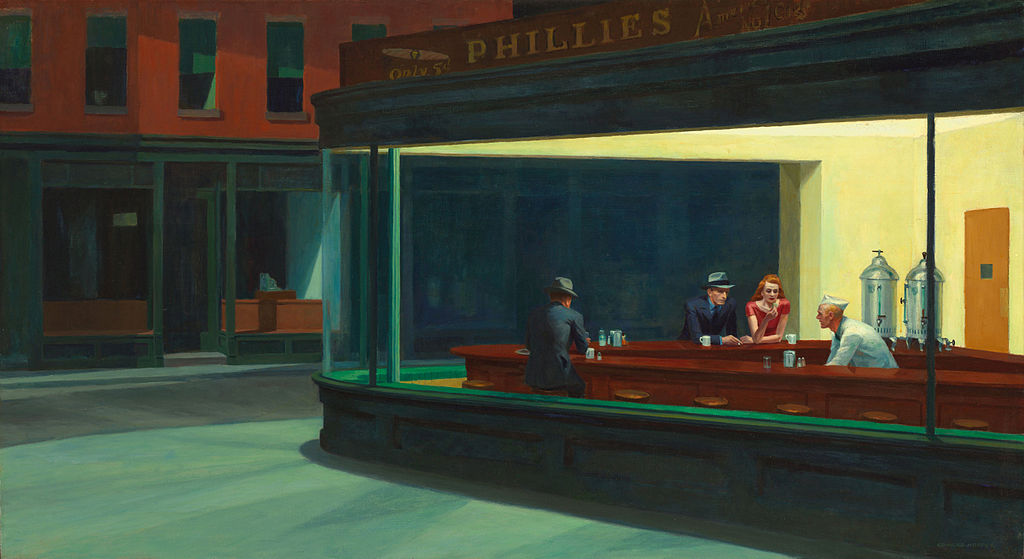Edward Hopper’s Nighthawks was drawn in 1942 and catches the oddity of dejection in metropolitan life. It is an existential emergency where a gathering of people fall prey to the disengaging quietness of New York City. Hopper’s comprehension of the expressive prospects of light playing on worked on shapes gives the composition its magnificence. Specialty of the 1940s starts with pictures of war and the American Depression. The work is the reaction to the besieging of Pearl Harbor on December 7, 1941, and the passage of the United States into World War II (Lasch & Dionne, 2018). The setting subsequently transmits around a city in a real sense and metaphorically obscured by emergency.
Sharp glaring lights drain onto the obscured roads of New York City, while four strangers lounge around the counter of a late-night burger joint. Individuals on the work of art are truly close yet mentally miles separated. The artist’s famous painting uncovers individuals’ failure to interface in the mid 1940s (Lasch & Dionne, 2018). Nighthawks portrays not just the harsh distance of living in an enormous city, yet the neurosis that held the United States after the 1941 Pearl Harbor assault (Dossin, 2017). Tensions longer than a subsequent assault covered the city like the continuous power outage penetrates New York and its inhabitants were exposed to.
There is no way to enter the coffee shop, the occasion is happening outside. This typifies the underrepresented job of the forlorn New Yorker blinded by bright shades. It tends to be seen that the characters’ hands are almost contacting, eyes are almost meeting, and mouths are almost talking (Martin & Jacobus, 2018). Hopper’s private setting impeccably epitomizes the estranging truth of life in the large city. His decision to portray an intersection absolutely mirrors the void between actual closeness and the powerlessness to genuinely interface in current metropolitan environments.

References
Dossin, C. (2017). The rise and fall of American art, 1940s-1980s: a geopolitics of Western art worlds. Routledge.
Lasch, C., & Dionne, E. J. (2018). The Culture of Narcissism: American life in an age of diminishing expectations. W.W. Norton & Co.
Martin, F. D., & Jacobus, L. A. (2018). The humanities through the arts. New York: McGraw-Hill Education.